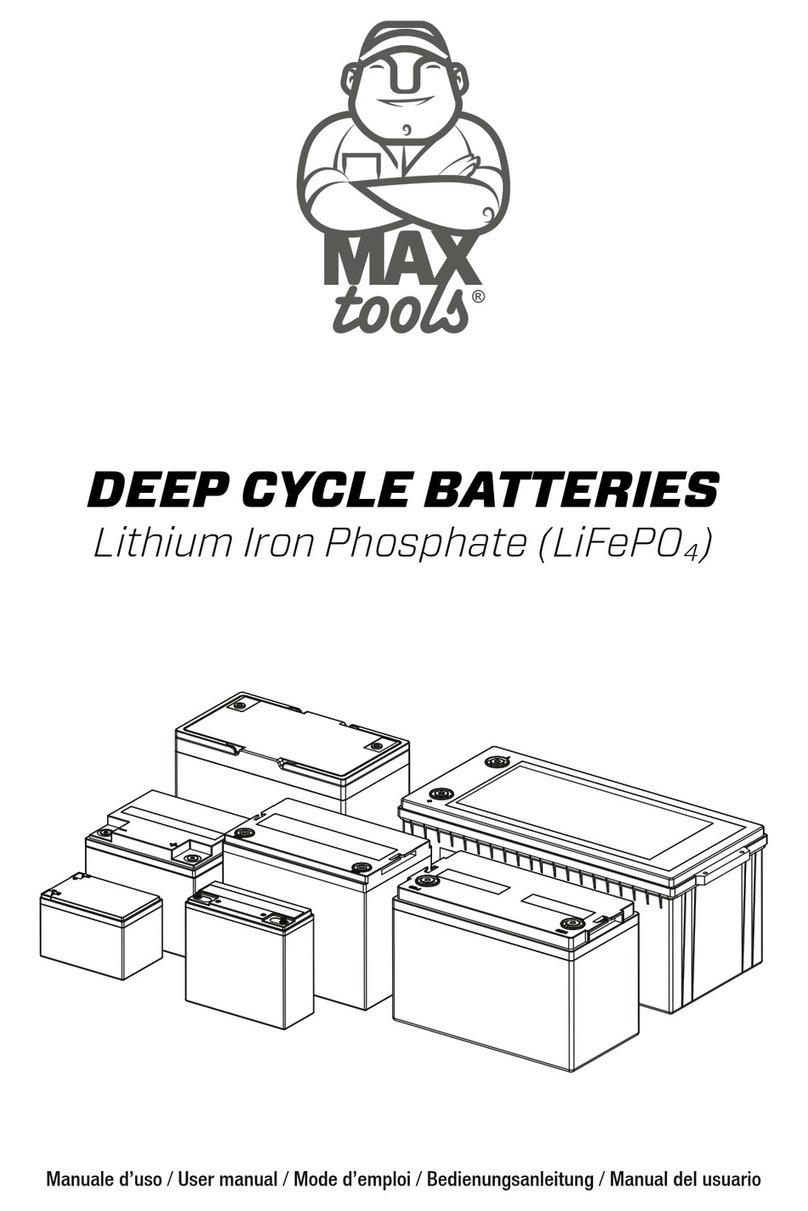
2
CARATTERISTICHE
• Lunga vita operativa. Può durare fino a 5-8 anni se usata correttamente, ovvero oltre il doppio
di una batteria al piombo-acido.
• Tecnologia con celle al Litio-Ferro-Fosfato (LiFePO4) altamente efficienti, con una capacità di
scarica massima fino a 70C.
• Prestazioni migliori dei maggiori competitors alle basse temperature.
• Autoscarica estremamente ridotta. La batteria è ancora in grado di avviare il veicolo dopo un
anno di stoccaggio a temperatura ambiente (compresa tra 0°C e 25° C).
• Grazie all’elevata densità energetica, pesa un terzo della corrispondente batteria al piombo-
acido.
• Il circuito di equalizzazione delle celle durante la ricarica protegge la batteria dalla sovraccarica.
• Cassa in grado di resistere a temperature di 230°C e a prova di acqua.
• Temperatura operativa tra -20°C e 55°C.
PRECAUZIONI
La batteria non può esplodere o prendere fuoco se usata in modo consono a quanto riportato nelle
presenti note. Se essa deve essere usata per scopi estranei all’avviamento di veicoli o al di fuori
dei limiti previsti, non ci riterremo responsabili per i danni causati da questo uso non autorizzato a
persone o cose.
Non ricaricare a tensioni superiori ai 15V.
Non usare caricabatteria per batteria al piombo che abbiano nel loro ciclo di ricarica la funzione di
desolfatazione automatica.
Non mettere in corto circuito e non collegare con polarità invertita.
Non aprire, disassemblare, deformare o modificare la batteria.
Non sovraccaricare o esporre a scarica eccessiva.
Tenere al di fuori della portata dei bambini.
Prima di affidarla ad un centro di riciclo, scaricare completamente la batteria.
Se non in uso riporre in luogo asciutto, fresco e ben ventilato.
Caricare la batteria ogni sei mesi e comunque quando scende sotto i 12,8V.
Usare gli appositi spaziatori se è necessario adattare la batteria a vani di maggiore dimensione.
Non toccare l’elettrolita qualora esso sia fuoriuscito dalla batteria, in quanto può causare danni a
pelle e occhi. In caso di contatto con la pelle lavare immediatamente con acqua e sapone. In caso
di contatto con gli occhi lavare con acqua e richiedere aiuto medico.
La capacità di avviamento può diminuire a temperature inferiori allo 0°C.
Non usare la batteria in combinazione con altre batterie di differente capacità, tipo o marca.
Seguire attentamente le presenti avvertenze.Alcuni comportamenti inadeguati (come cortocircuitare
Italiano




























